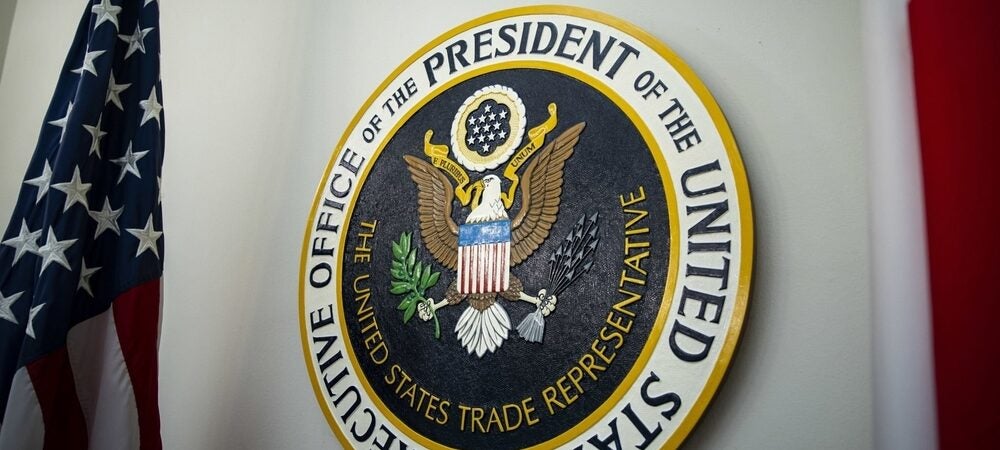THE PRESIDENT’S TRADE POLICY AGENDA
I. INTRODUCTION
The Biden Administration promised to build the economy from the bottom up and the middle out, and we are doing just that. Unemployment is at its lowest rate in over 50 years. This Administration has seen more jobs created in two years than any other Administration has seen in four. Manufacturing is rebounding faster than it has in almost 40 years, while wages are rising, and rising even faster for lower- and middle-income workers. The American Rescue Plan, the Bipartisan Infrastructure Law, the CHIPS and Science Act, and the Inflation Reduction Act were historic investments in America, and they are working.
The Biden Administration continues to believe that trade can—and should—be a force for good. Done right, and in coordination with other policy disciplines, it can grow the middle class, address inequality, tackle the climate crisis, and level the playing field by promoting fair competition. We remain committed to upholding a fair and open global trading system—one that puts working families first, raises living standards, ensures full employment, and promotes sustainable development.
We are continuing to rewrite the story on trade by bringing more people into the process and developing policies and initiatives that are resilient and sustainable and create broad-based growth. In 2023, our trade agenda will continue to focus on unlocking new opportunities for American workers and families—while also supporting and strengthening the middle class, driving decarbonization, and creating good-paying jobs across the American economy. In the aftermath of the COVID-19 pandemic and Russia’s brutal, illegal attack on Ukraine, it also means fortifying relationships with our partners and allies and strengthening critical supply chains to withstand shocks and disruptions to the system and to defend democratic values.
To realize this vision, we are continuing to forge the partnerships necessary to update and enforce the rules governing the global economy and trade.
In the Indo-Pacific and the Western Hemisphere, the United States is leading with a positive economic vision through the Indo-Pacific Economic Framework for Prosperity and the Americas Partnership for Economic Prosperity. With the European Union, we continue to deepen our relationship and intensify cooperation on pressing challenges, such as the People’s Republic of China’s (PRC) non-market policies and practices. Further, we are intensifying negotiations on a first-of-its-kind trade arrangement to address non-market excess capacity and the greenhouse gas emissions of imported steel and aluminum. We are also continuing to build out the Trade and Technology Council, and the Trade and Labor Dialogue under its umbrella, to pursue shared priorities, including supply chain resilience, challenges posed by non-market economies, inclusive digital trade, and the elimination of forced labor.
Additionally, in 2022, we kicked off ambitious initiatives with Taiwan and Kenya to deepen our trade and economic relationships with both partners, and we aim to make rapid progress on both initiatives in 2023. At the World Trade Organization (WTO), after working with WTO Members to deliver key outcomes during the Twelfth Ministerial Conference, the United States is driving the conversation on transforming the institution to be more responsive to the rapidly changing global economic environment and to the needs of everyday people.
Moreover, following the successful U.S. Africa Leaders Summit last year, the Administration will continue to strengthen our partnerships with the African continent and to support regional and continental integration efforts, with the well-being of workers, women, and youth to inform our work.
Our Administration is also fully committed to continued enforcement of our existing trade agreements to hold our trading partners accountable. This includes utilizing the United States-Mexico-Canada Agreement’s Rapid Response Mechanism to raise labor standards across North America and drive a race to the top. We are also using other mechanisms to open, maintain, and enhance access to markets and address unfair trade practices that harm our workers and businesses and ensure that they enjoy the benefits that they were promised.
Finally, a vital element of our effort to build an inclusive trade policy agenda is understanding the effects of our policies on underrepresented and underserved workers and communities, and ensuring that they have a say in how our policies are designed and implemented going forward. We know that an important part of making trade work for all Americans is having a better understanding of the effects of past trade policies.
At the Administration’s request, the United States International Trade Commission (USITC) conducted a first-of-its-kind study of the distributional effects of goods and services trade and trade policy on U.S. workers. Through an extensive information gathering process, the investigation brought to light what many already knew: while trade has benefited many, devastating effects have been concentrated in certain communities. The report also illustrated the gaps around data, and particularly disaggregated data, that can further inform a more equitable trade policy. USTR will continue working with the USITC and other partners to design trade policy that addresses inequality and supports the goals and aspirations of all Americans. USTR will also continue to implement its Equity Action Plan to ensure that racial and gender equity is embedded in its ecosystem.
By placing workers and everyday people at the center of our trade policy, the Biden Administration will continue to use trade as a force for good, to build a durable and fair tomorrow by pursuing resilience, sustainability, and inclusive prosperity.
2023 Trade Policy Agenda and 2022 Annual Report FINAL (1)To read the full trade policy agenda, please click here.

